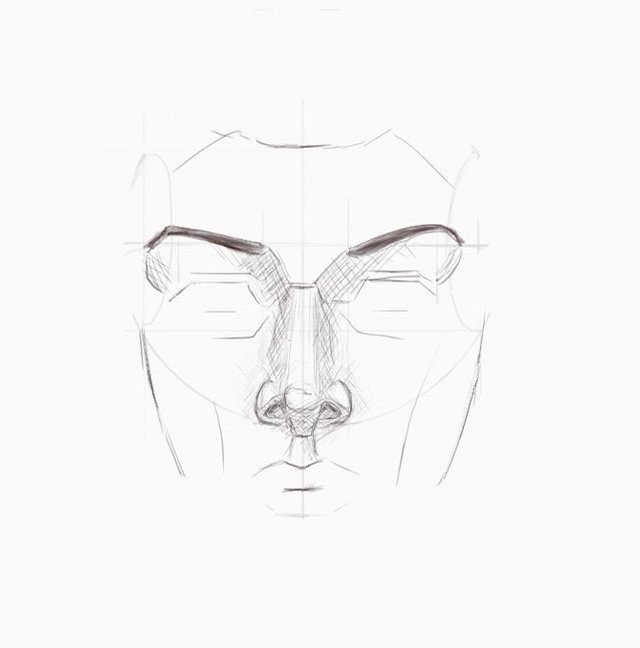
Hi friends!
Acabamos de hacer tres ejercicios para la nariz, en vista 3/4, ahora seguimos haciendo unos bocetos de la nariz en vista frontal.
We need to draw a face from the front, we will do it as we have seen in the previous lessons, applying the studied canon.
Then we sketch the nose and some of the other features of the face, just to give some context to what we care about in this exercise, the nose.
Necesitamos dibujar una cara de frente, lo haremos como hemos visto en las lecciones anteriores, aplicando el canon estudiado.
Luego dibujamos la nariz y algunas de las otras características de la cara, solo para dar un poco de contexto a lo que nos importa en este ejercicio, la nariz.
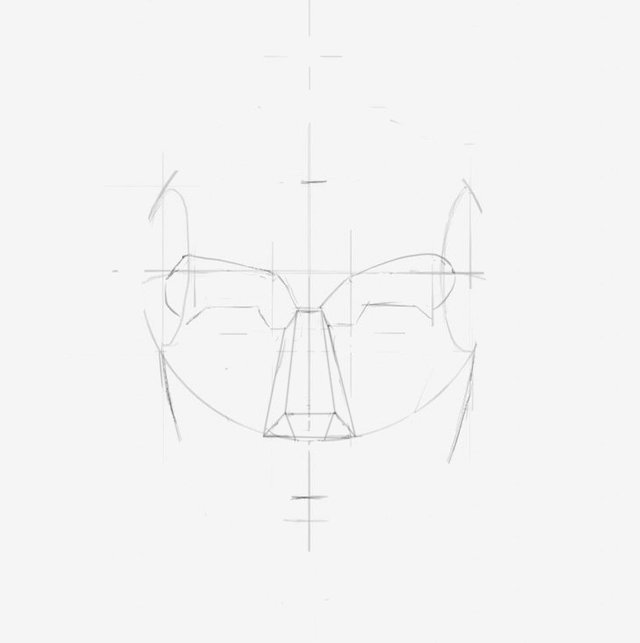
As we have also seen in previous posts, the nose must match the geometric shape of a parallelepiped like the one drawn below.
Como también hemos visto en publicaciones anteriores, la nariz debe coincidir con la forma geométrica de un paralelepípedo como el dibujado a continuación.
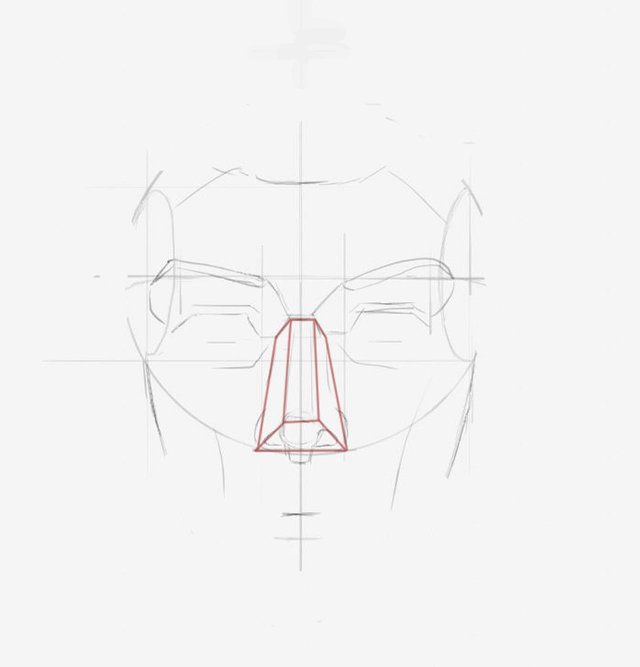
This is our quick sketch of a nose in front view.
Este es nuestro boceto rápido de una nariz en vista frontal.
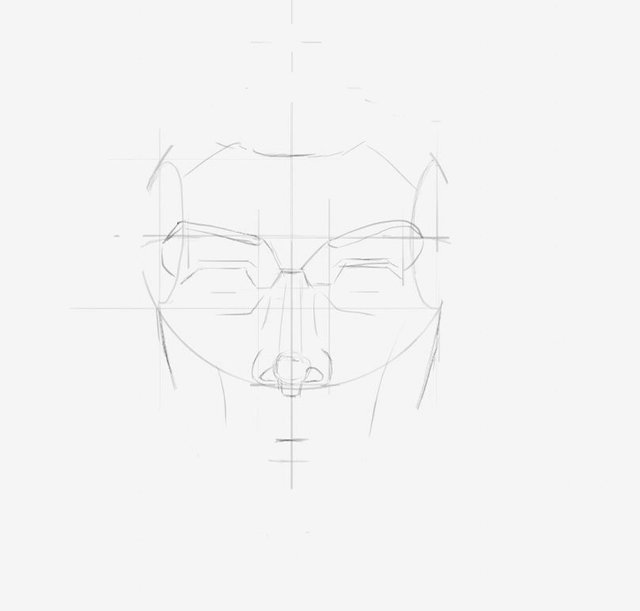
We will always try to establish some relationships between facial features in a logical way, based on what we have seen in the study of the facial canon. Here, for example, the crossed lines that start from the external third of the face at the height of the eyebrows and that pass through the tip of the nose can help us to give the approximate width of the mouth, which is in relation to the location of the iris of the eye, as we will see later.
Siempre intentaremos establecer algunas relaciones entre los rasgos faciales de forma lógica, basándonos en lo que hemos visto en el estudio del canon facial. Aquí, por ejemplo, las líneas cruzadas que parten del tercio externo de la cara a la altura de las cejas y que pasan por la punta de la nariz nos pueden ayudar a dar el ancho aproximado de la boca, que está en relación con el ubicación del iris del ojo, como veremos más adelante.
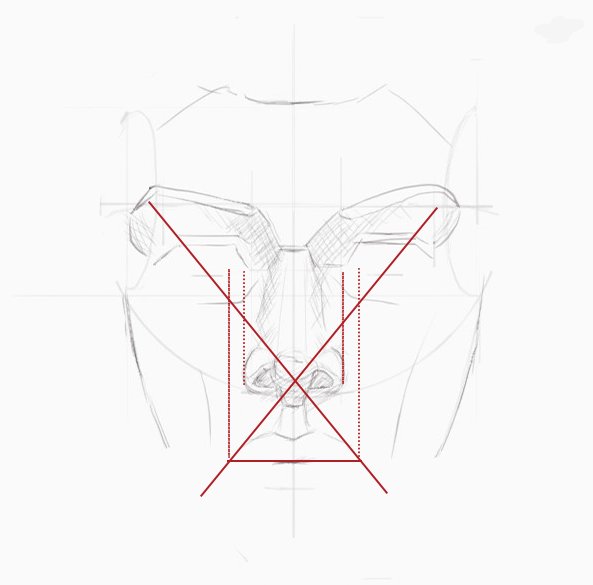
These geometric relationships that we make are crucial for those who intend to draw from the live model to compare the location, shape, or proportion of one feature in relation to others. Once you have learned to establish these relationships, you will do it mentally without having to draw them.
Estas relaciones geométricas que hacemos son cruciales para aquellos que pretenden dibujar a partir del modelo en vivo para comparar la ubicación, la forma o la proporción de una característica en relación con otras. Una vez que hayas aprendido a establecer estas relaciones, lo harás mentalmente sin necesidad de dibujarlas.

I suggest you to read:
Te sugiero que leas:
https://steemit.com/hive-185836/@jorgevandeperre/the-frontal-canon-of-a-human-face-el-canon-frontal-de-un-rostro-humano-club100
https://steemit.com/hive-185836/@jorgevandeperre/drawing-the-nose-in-front-view-dibujando-la-vista-frontal-la-nariz-club100



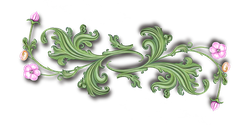
I wish you a very nice day and good exercise!
Te deseo un gran día y muy buenos ejercicios!
Time
by J.Van de Perre - video demo, painting process
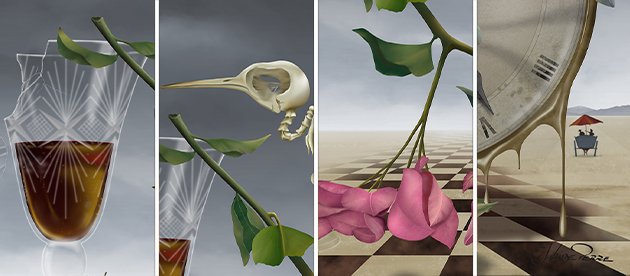
Time
by J.Van de Perre - video demo, painting process

Also, thanks to @xpilar for making these initiatives possible with their great support.

@tipu curate
Downvoting a post can decrease pending rewards and make it less visible. Common reasons:
Submit
Very cool design.
Downvoting a post can decrease pending rewards and make it less visible. Common reasons:
Submit
Thank you!
Downvoting a post can decrease pending rewards and make it less visible. Common reasons:
Submit
You are welcome.
Downvoting a post can decrease pending rewards and make it less visible. Common reasons:
Submit
Your post is manually rewarded by the
World of Xpilar Community Curation Trail
STEEM AUTO OPERATED AND MAINTAINED BY XPILAR TEAM
https://steemit.com/~witnesses vote xpilar.witness
Downvoting a post can decrease pending rewards and make it less visible. Common reasons:
Submit
Thank you very much!
Downvoting a post can decrease pending rewards and make it less visible. Common reasons:
Submit